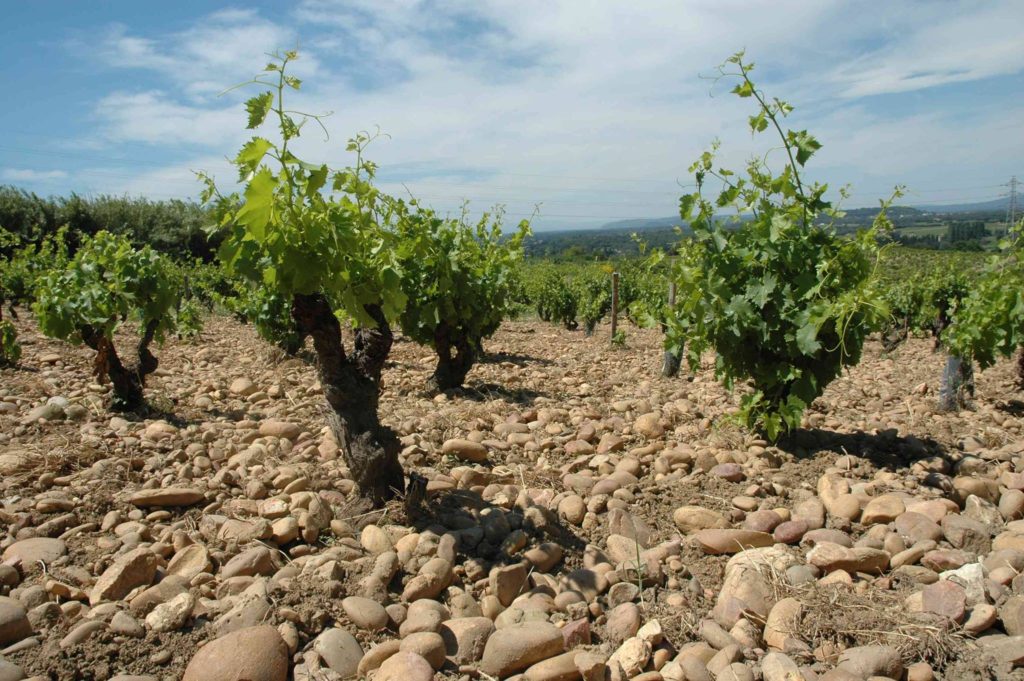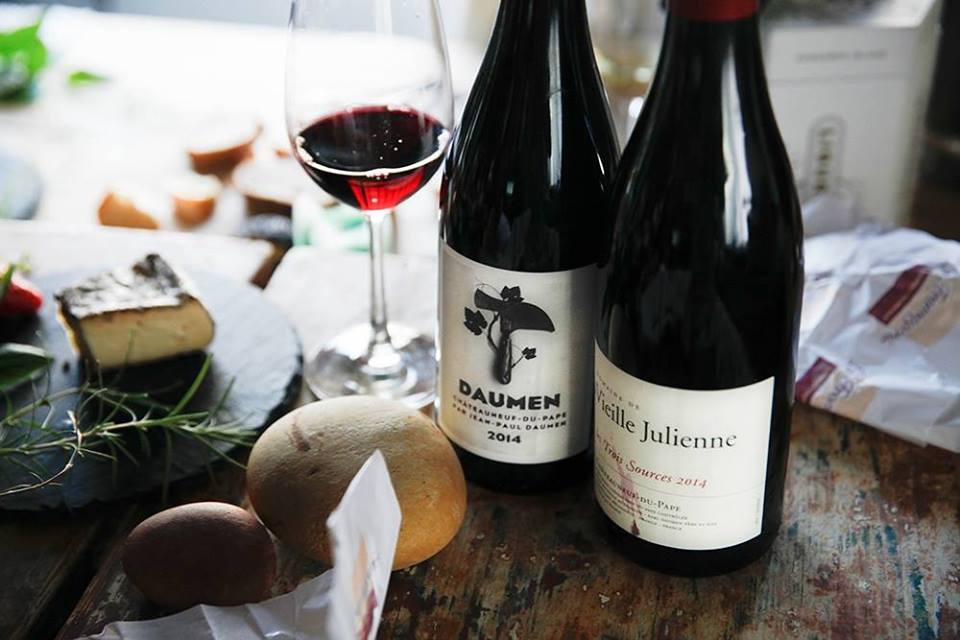
The Terroir and Soil of Chateauneuf du Pape:
“The soils found in Chateauneuf du Pape, with its combination of rocks, stone, sand, limestone and clay terroir would be poor for most living things. But it’s perfect for the grapes grown in the appellation.

In the west, where the commune of Chateauneuf du Pape is located, you find soils with various sizes of rocks, stone, sand, clay and pebbles. In France, the various rocks, stones and pebbles are referred to as galets roulés. These rocks, stones and pebbles play an integral in the terroir and the development of the grape.
The various stones reflect light to the vines, leafs and grapes. They also absorb heat during the day and radiate that heat to the vines during the cooler evenings, which aids in the development and ripening of the fruit.

The rocky, stone filled terroirs produce ripe, concentrated, full bodied, intense wines. While many of the soils are riddled with stones, in the cooler terroirs found in the west, you also have deposits of limestone, which is perfect for the white wines. Red wines from limestone provide intense garrigue aromatics. In the northern part of the appellation, where Orange is located, you have more sand, clay, pebbles, limestone and marl, but less large stones and rocks.
The sandy soils often produce the wine elegant, supple wines in all of Chateauneuf du Pape. To the east you find Courthezon and Bedarrides with sand, pebbles and marl and in the southern part of the appellation, the soils have more sand, gravel, marl, clay and limestone in the terroir. The clay soils are perfect for making wines with richness and concentration!”
to read more: https://www.thewinecellarinsider.com/rhone-wines-cote-rotie…
avin.jp


















